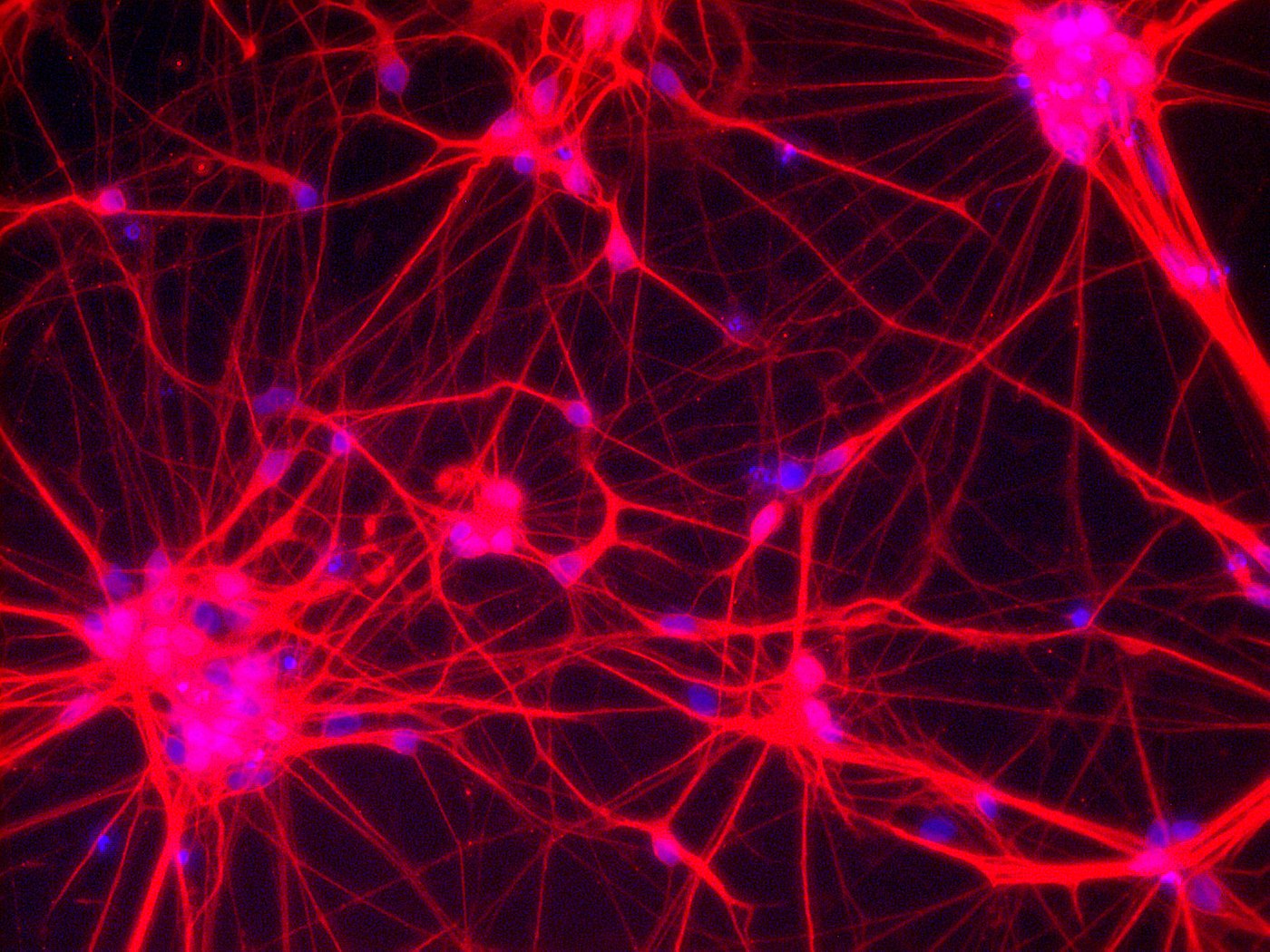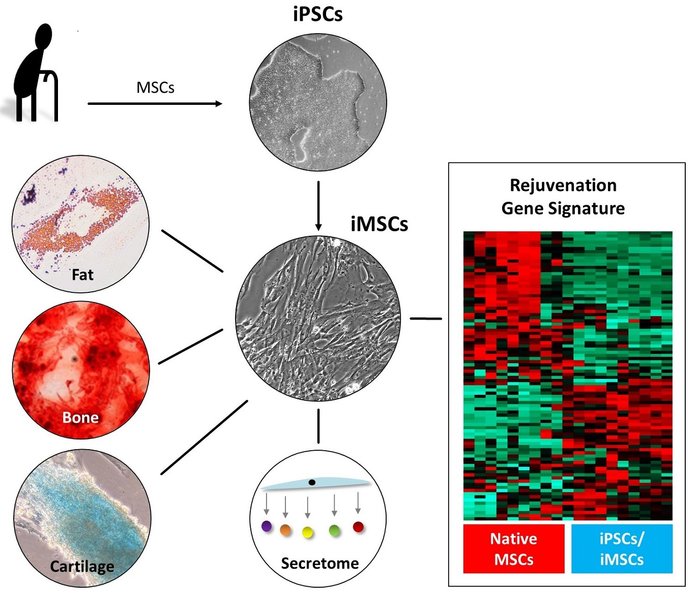
Neurons – Network of neuronal cells (Blue: nucleus; Red: neurons) [Copyright: Institute for Transfusion Medicine, UK Essen]

MSCs from elderly patients were reprogrammed into iPSCs and further differentiated into iMSCs. These iMSCs showed typical MSC features by building up bone, cartilage and fat in vitro. The iMSCs acquired a gene signature associated with rejuvenation and secreted factors similar to native MSCs, thereby emphasizing their clinical potential.
The use of primary mesenchymal stem cells (MSCs) is fraught with ageing-related shortfalls such as limited expansion and early senescence. Human induced pluripotent stem cells (iPSCs)-derived MSCs (iMSCs) have been shown to be a useful clinically relevant source of MSCs that circumvent these ageing-associated drawbacks. The importance of this concept is manifested by the successful Phase 1 clinical trial for the treatment of Graft-versus-host disease by Cynata Therapeutics and the National Health Service UK; a Phase 2 trial is planned for 2019.
A collaborative study coordinated by the Institute for Stem Cell Research and Regenerative Medicine (Prof. Dr. James Adjaye) which includes the Division of Paediatric Stem Cell Therapy, Clinic for Pediatric Oncology, Hematology and Clinical Immunology (Prof. Dr. Meisel) and the Institute for Transplantation Diagnostics and Cell Therapeutics (PD Dr. Sorg) from the Medical Faculty of Heinrich Heine University Düsseldorf and the Bone and Joint Research Group, Centre for Human Development, Stem Cells and Regeneration from the University of Southampton (Prof. Dr. Oreffo) published in the journal Stem Cell Research and Therapy analysed the acquisition of rejuvenation-associated hallmarks in iMSCs.
To this end, the team compared cellular features, transcriptomes and secretomes of iMSCs differentiated from embryonic stem cells (ESCs-H1) and iPSCs, either coming from fetal or elderly MSCs. The generated iMSCs (irrespective of source) met the criteria set out for MSCs, and dendrogram analyses confirmed that the transcriptomes of all iMSCs clustered together with the parental MSCs and separated from the pluripotent stem cells.
Irrespective of donor age and initial cell type, iMSCs acquired a rejuvenation-associated 50-gene comprising signature which is also expressed in pluripotent stem cells but not in the parental adult MSCs.
Importantly, in terms of regenerative medicine, iMSCs acquired a secretome similar to that of primary MSCs, thus highlighting their ability to act via paracrine signalling.
The iMSC concept could allow circumventing the drawbacks associated with the use of adult MSCs und thus provide a promising tool for use in various clinical settings in the future.
Publication: Spitzhorn LS, Megges M, Wruck W, Rahman MS, Otte J, Degistirici Ö, Meisel R, Sorg RV, Oreffo ROC, Adjaye J. (2019) Human iPSC-derived MSCs (iMSCs) from aged individuals acquire a rejuvenation signature. Stem Cell Research & Therapy 10(1):100. doi: 10.1186/s13287-019-1209-x. PubMed PMID: 30885246.
Klick for further information on the research groups of Prof. Dr. James Adjaye and PD Dr. Rüdiger Sorg.